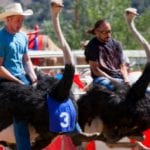 Weird Stuff
Weird Stuff  Weird Stuff
Weird Stuff  Our World
Our World 10 Archaeological Discoveries of 2025 That Refined History
 Weird Stuff
Weird Stuff 10 Fascinating Facts You Might Not Know About Snow
 Miscellaneous
Miscellaneous Top 10 Things Crypto Was Supposed to Change & What Actually Did
 History
History 10 Huge Historical Events That Happened on Christmas Eve
 Music
Music 10 Surprising Origin Stories of Your Favorite Holiday Songs
 History
History 10 Less Than Jolly Events That Occurred on December 25
 Weird Stuff
Weird Stuff 10 Funny Ways That Researchers Overthink Christmas
 Politics
Politics 10 Political Scandals That Sent Crowds Into the Streets
 Weird Stuff
Weird Stuff Ten Bizarre Facts About The Doge Meme
 Weird Stuff
Weird Stuff 10 Weird Things People Used to Do at New Year’s
 Our World
Our World 10 Archaeological Discoveries of 2025 That Refined History
 Weird Stuff
Weird Stuff 10 Fascinating Facts You Might Not Know About Snow
Who's Behind Listverse?

Jamie Frater
Head Editor
Jamie founded Listverse due to an insatiable desire to share fascinating, obscure, and bizarre facts. He has been a guest speaker on numerous national radio and television stations and is a five time published author.
More About Us Miscellaneous
Miscellaneous Top 10 Things Crypto Was Supposed to Change & What Actually Did
 History
History 10 Huge Historical Events That Happened on Christmas Eve
 Music
Music 10 Surprising Origin Stories of Your Favorite Holiday Songs
 History
History 10 Less Than Jolly Events That Occurred on December 25
 Weird Stuff
Weird Stuff 10 Funny Ways That Researchers Overthink Christmas
 Politics
Politics 10 Political Scandals That Sent Crowds Into the Streets
 Weird Stuff
Weird Stuff Ten Bizarre Facts About The Doge Meme
10 Bizarre Forgotten Sports From History
Sports have always been among mankind’s most treasured endeavors. It usually starts off as an accessible form of entertainment and, before you know it, it becomes part of a civilization’s culture. Nowadays, the international scene is dominated by a handful of the most popular sports, but that wasn’t always the case. There was a time when each town had its own local pastime. And this led to some bizarre games that are now mostly forgotten (although, in some cases, that’s a good thing).
10 Barking Off Squirrels

“Barking off” was a type of squirrel hunting popular in America in the late 18th century and early 19th century. It was created in the backwoods of Kentucky and popularized by renowned frontiersman Daniel Boone, who was famous for his marksmanship.
The goal of the contest was to hunt squirrels, but not by shooting them. Instead, the hunters would shoot the bark right below the squirrels. The impact was strong enough to shatter the bark and create a concussion blast powerful enough to kill the squirrels. For trophy hunters, this type of shooting had the added bonus of leaving the squirrels’ skin intact.
The practice of barking off squirrels occurred at a time when the woods of Kentucky were filled with these unlucky woodland critters. Regular squirrel hunts were so frequent that it wasn’t uncommon for hunting parties to kill thousands of them in a single day. The most successful hunter often was not the best shot but the guy who could reload the fastest. That was why a new test of skill was welcomed by both hunters and spectators, who would often gamble on the outcome of the sport.
9 Equestrian Long Jump
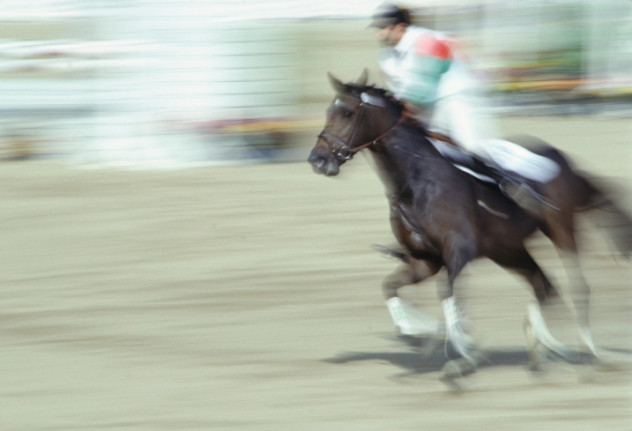
Many sports are created by combining two concepts that already existed. While some ideas have been successful, not all of them are winners. Take equestrian long jump, for example. This sport took the human long jump and combined it with horse racing to create a sport that was less exciting than either.
There was a lot of interest in this concept in its early days. It was even featured as a sport at the 1900 Summer Olympics in Paris as part of a double equestrian event that also featured the horse high jump.
If you are wondering why the equestrian long jump is not popular today, it’s because it failed to make an impression. In fact, it was downright anticlimactic. The gold medal was won by Belgian racer Constant van Langhendonck and his horse, Extra-Dry. Their winning leap measured 6.1 meters (20.0 ft). Although it was significantly better than any other horse jump that day—second place came in at 5.7 meters (18.7 ft)—it was still lackluster as people were expecting an inhuman display of athletic prowess. For comparison, the current world record for a human long jump is 8.95 meters (29.4 ft).
8 Turtle Racing
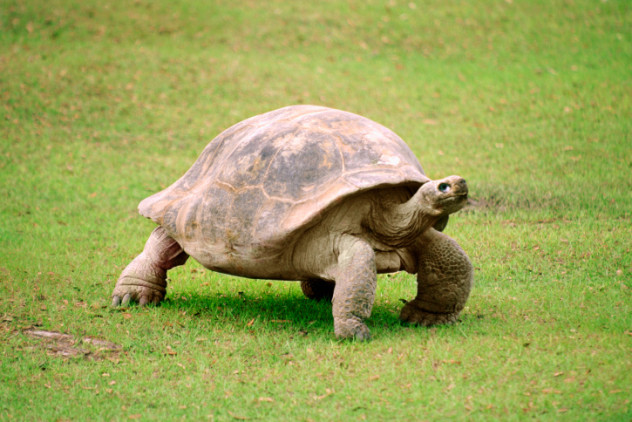
You might think that turtle racing doesn’t count as a forgotten sport because it is still practiced today, but there are few similarities between the old and current versions aside from the name. Nowadays, turtle racing is a fun activity for kids you can find at county fairs. All the participants huddle up in the center of a circle and let their turtles loose. The creatures wander around aimlessly until one eventually makes it out of the circle and is declared the winner.
That was not the case 100 years ago. Back then, giant turtles were used in a genuine straight-line race. Crowds of excited spectators watched impatiently from the sides just like they would at a horse race. The turtles even had small children riding them like jockeys.
As bizarre as that image might be, there are even stranger claims about the origin of the sport. According to an article in the Miami News, turtle racing first became popular in the Bahamas, where it was a favorite local pastime. However, there were a few key differences. For starters, the races took place in water instead of on land, so giant sea turtles were used, typically loggerhead turtles. These turtles had men riding them as jockeys, and they weren’t just for show. They were there to make sure the animals followed the course, which was usually more complex than a simple straight line.
7 Quintain
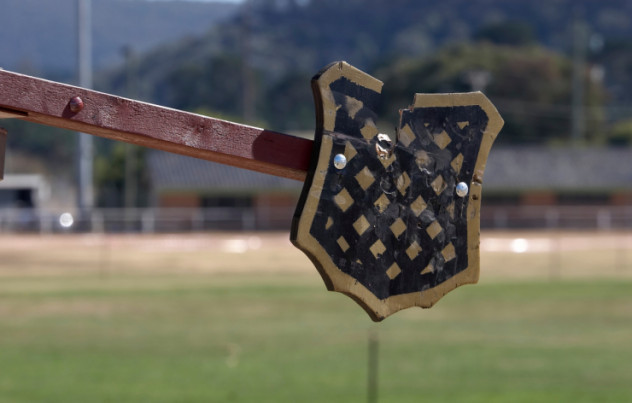
Jousting is an essential part of medieval lore. There was no better way for a knight to prove his valor than to enter a jousting tournament and perform in front of the king and his royal court. However, jousting champions are made, not born. In order to perfect their skills, knights would need to train—and that’s quintain. Instead of two knights charging at each other, one knight would charge at a stationary target (also known as a quintain) in order to improve his skill.
Typically, the target was a shield balanced on a pole with a counterweight at the other end. The weight served multiple purposes as the quintain would spin when hit. An accurate shot would cause the maximum spin, and this was considered a good indicator of a knight’s skill. However, a slow or incorrect hit could spin the weight (usually a sandbag) in time to hit the rider from behind and knock him off his horse.
Since quintain was merely a form of training, there was very little pomp and circumstance associated with it. Everyone was free to watch and even participate. Eventually, this turned quintain into a sport of its own, accessible to all the classes. Even those without a horse could participate by using a wooden horse or a boat in some areas. They could even simply run toward the target.
6 Eel Pulling

It shouldn’t be surprising to find out that human beings weren’t always concerned with the welfare of animals. We certainly would not have let it get in the way of a good time. Such was the case with eel pulling, a practice that was popular in the Netherlands in the 19th century. There were two basic forms of this sport. One was a classic tug-of-war battle, but the rope was replaced with a live eel. The eel was soaped up to make it more slippery, and two teams would pull ferociously at each end of the doomed animal.
The other version of eel pulling involved hanging the eel from a line dangling over a canal. Players had to jump and take down the eel while passing through the canal in a boat. This version of the sport, which was more popular, was more entertainment than sport. Spectators would laugh at the participants, who often ended up in the canal.
The biggest eel pulling hot spot was Amsterdam. The game was so popular that people kept playing it even after it was outlawed. Trying to stop the Dutch from enjoying their eel pulling had dire consequences, as the people of Amsterdam found out on July 25, 1886. A police officer ended a game in progress by cutting the line. This triggered the Eel Riot of 1886, which resulted in 26 deaths, 100 injuries, and countless arrests.
5 Cock Shying
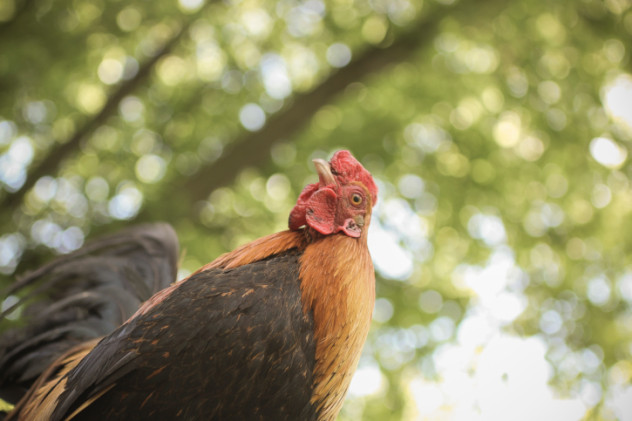
Cock-shying, also known as “cock throwing,” was a blood sport practiced throughout most of England up until the 18th century. If you’re looking at the name and thinking this was a cruel game wherein people threw a rooster as far as they could . . . relax, it’s not that.
Actually, people threw things at the rooster until they killed it. Specifically, they threw weighted sticks called “coksteles.” Lacking a cokstele, regular cudgels would do.
This tradition was associated for centuries with Shrove Tuesday (aka Pancake Day, the last day before Lent). However, cock-shying was frequently practiced at pubs just for the fun of it—and for the chance of winning a rooster. The bird would be taken outside and tied to a post with a few feet of freedom so it could evade incoming sticks. Players would throw their coksteles at the rooster, and spectators would bet on the outcome. If a player hit the rooster without killing it, he was allowed to try to grab the dazed bird before it recovered. If he succeeded, he could take it home.
As with eel pulling, there was an attempt to ban cock-shying that also went poorly. In 1660, on the day before Shrove Tuesday, the practice was banned in Bristol. The next day, a riot broke out. The rioters threw dogs and cats at the mayor’s house in protest.
4 Stoolball
Unlike most other entries on this list, stoolball is a sport that is still occasionally played in small areas of southeast England. Its origins trace back to the 14th century in Sussex. Some historians see it as an ancestor of both cricket and baseball while others point out that stoolball was the first bat-and-ball game played in North America in Plymouth, 1621.
The modern game of stoolball is only a best-guess version of the ancient game. There is no definitive historical evidence of how it was played in the past. Also, being a folk game that was open to both men and women, it is likely that the rules were changed from region to region.
Players hit a ball using a bat and then run between stools to score. The bat is a wooden paddle with a short handle and an oval shape, and the stools play the role of wickets in cricket.
There was a time when stoolball was popular enough to make its way into Shakespeare’s The Two Noble Kinsmen. In 1927, there were over 1,000 stoolball clubs around the world.
In his account of his experiences as a prisoner of war during World War II, Pat Reid described a game called stoolball being played by the prisoners at Colditz. However, the name was purely coincidental and had nothing to do with the historical sport.
3 Episkyros

Episkyros was a simple ball game played by the ancient Greeks. However, it was not intended for serious athletes. The Greeks considered athletic pursuits among the most worthwhile and held all sportsmen in high regard. Episkyros was a game meant for everybody else. Old people, women, and children were all free to enjoy this game.
Two teams of equal members stood opposite each other, and a line—the skuros—was drawn between. Two more lines were drawn behind each team. One team then threw the ball over the other and tried to advance as their opponents recovered. The second team grabbed the ball and threw it back, trying to make up any lost ground and push the other players back. The winners were the first team to completely push the other side over the line that was originally behind them.
Basically, a few agile players would attempt to catch the ball while the rest of the team worked together to push the opponents back, so it was similar to modern rugby or American football. Episkyros was particularly popular in Sparta, where it was expected for children and women to take part in athletic displays. It later inspired a more physical Roman game called harpastum.
2 Fox Tossing

Back during the 17th and 18th centuries, when Europe’s aristocracy wasn’t busy hunting foxes, they were flinging them into the air in a game known simply as “fox tossing.” It was typically reserved for the upper classes and was usually performed at big events because fox tossing required a lot of preparation, a large enclosed area, and dozens if not hundreds of animals.
The game was played in pairs. Each member of a team would hold the end of a sling lying on the ground. Foxes would be let loose in the enclosure. When one ran over the sling, both players pulled hard in order to throw the fox into the air. The winner was the team that achieved the greatest height. The reported record for this practice was 7.5 meters (25 ft).
Don’t let the name fool you. Foxes were not the only unwilling participants in this game. Other critters were happily used when foxes were not available. In fact, at a famous fox tossing event held in Dresden, almost 700 foxes were used along with over 500 hares, 34 badgers, 34 wild boars, 21 wild cats, and three wolves. The sport was often dangerous for all involved because the scared animals would attack the players.
1 Dwile Flonking

Like stoolball, dwile flonking is still practiced in remote areas of the English countryside. The origins of dwile flonking are a bit murky. Flonking enthusiasts proudly claim this practice dates back to medieval times, originating during the Suffolk harvests 400 years ago, but that seems very unlikely. Others claim it is a far more recent invention of the 1960s and a matter of town pride.
Its future is looking just as murky. This traditional pub sport has been banned in several areas for violating health and safety regulations.
As you would expect with any pub game, dwile flonking involves drinking . . . a lot of drinking. It also involves two teams trying to fling a beer-soaked cloth, or “dwile,” at each other’s heads. After a sugar beet is tossed to see who goes first, one player holds a pole with the dwile on it, or “driveller,” while the other team dances in a circle around him, which they call “girting.” He must hit one of the players with the dwile. If he misses, the player is called a “swodger.” While the opposing team forms a straight line, he must then down a pot of beer before the dwile gets passed from player to player down the line. There’s also a point system, but most participants are too drunk by the end of the game to care who won.
Radu is a history/science buff with an interest in all things bizarre and obscure. Say hi on Twitter or check out his website.
